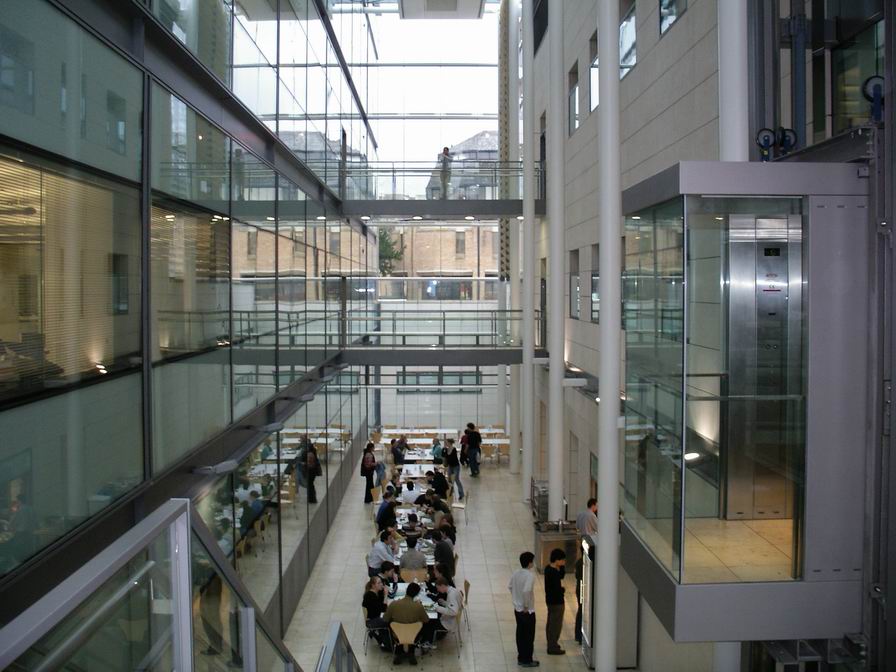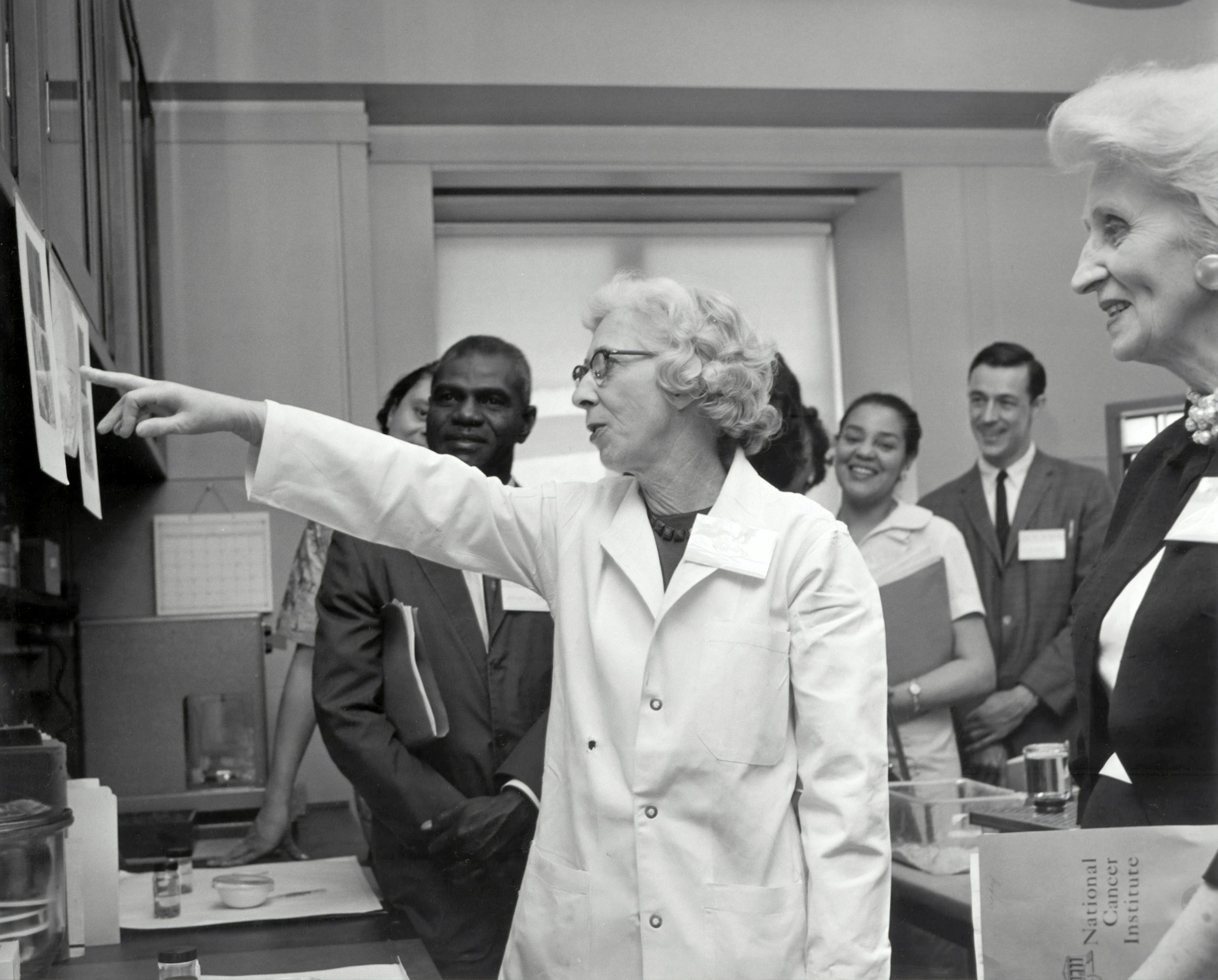Dr Martine Abboud is a multi-award winning scientist, working in the Schofield group in the Department of Chemistry and as a Junior Research Fellow at Kellogg College. Martine writes to ‘The Oxford Scientist’ about what she does and her passion for research.
During my time in Oxford, I have discovered a genuine interest for scientific research which has undoubtedly been enhanced by the international culture of our laboratory. The interdisciplinary and collaborative nature of my work keeps me motivated. I relish being in the lab, talking to people, and doing ‘fun’ science that actually matters!
As a first-generation graduate I believe that science has no nationality, Oxford is accessible, and research has no boundaries. Accordingly, I have been involved in fostering diversity in the chemistry department by sitting on various consultative and executive committees, acting as a student advisor, and delivering engaging outreach talks at state schools. I also engage the public with my research via active science communication and event organisation, including tech-based lectures in less economically developed countries to raise awareness about global health issues, including antibiotic misuse.
My research lies at the interface of biology, chemistry and biophysics, and has led to novel method development and advances in three different areas of scientific research. These include oxygen sensing, antibiotic resistance, and metabolic alterations involved in cancer.
How do we sense oxygen?
At high altitude, the atmospheric pressure is lower, so one breathes in less oxygen. Cells in our bodies have sensors that detect lower oxygen levels and have developed mechanisms to adapt to them. Over time, the cells boost their blood supply in order to compensate for the lower oxygen levels. This natural response is important in various diseases. Therefore, its manipulation is desired in certain conditions. For example, drugs that boost the delivery of oxygen are of interest in the case of anaemia and cardiovascular diseases while turning off oxygen delivery is advantageous in treating tumours.1 My work focused on a the PHD2 protein (human prolyl hydroxylase domain-containing protein 2), which is crucially involved in the body’s response to oxygen. Our work showed that the substitution of a single amino acid, which occurs with PHD2 variants linked to erythrocytosis (abnormally high number of red blood cells) and breast cancer, can alter the selectivity of PHD2 towards its substrates.2-4 Comparative studies5 on the activities and selectivity of PHD inhibitors in clinical trials have helped us understand the oxygen-sensing response and informed on new drug development.
What is antibiotic resistance?
Antibiotic resistance is an immediate and growing global health threat. It is estimated that within the UK, 8.2% of hospitalised patients contract a hospital-acquired infection, costing the National Health Service more than £1 billion per annum. β-Lactams (e.g. penicillins, cephalosporins, and carbapenems) remain the most important class of antibiotics, representing 60% of all antibiotics used; however, their use is threatened by antimicrobial resistance.6 I have focused on metallo-β-lactamases (MBLs), which are bacterial enzymes that degrade β-lactam antibiotics, and hence their inhibition is of major clinical interest. First, my work on profiling known clinical inhibitors has helped inform practice on the susceptibility of such inhibitors to degradation by MBLs.7 New method development has enabled us to uncover how MBLs interact with their β-lactam substrates and hence lead to their degradation.8,9 Furthermore, my work has enabled the development of new class of inhibitors which have a novel mode of action.10
How does altered metabolism induce tumorigenesis?
More recently, I have become interested in how altered metabolism promotes cancer. Although pioneering attempts are being made to target mutant forms of metabolic enzymes for the treatment of both solid tumours and hematologic malignancies, these are hampered by a lack of understanding of the metabolic and biochemical consequences of the mutations. Research into these effects might lead to therapeutic benefits for patients with cancer, and potentially can better inform on diet.
1 Wilkins, S. E., Abboud, M. I., Hancock, R. L. & Schofield, C. J. Targeting Protein-Protein Interactions in the HIF System. ChemMedChem 11, 773-786, doi:10.1002/cmdc.201600012 (2016).
2 Abboud, M. I. et al. Studies on the Substrate Selectivity of the Hypoxia-Inducible Factor Prolyl Hydroxylase 2 Catalytic Domain. ChemBioChem 19, 2262-2267, doi:10.1002/cbic.201800246 (2018).
3 Chowdhury, R. et al. Structural basis for oxygen degradation domain selectivity of the HIF prolyl hydroxylases. Nat Commun 7, 12673, doi:10.1038/ncomms12673 (2016).
4 Abboud, M. I. et al. 2-Oxoglutarate regulates binding of hydroxylated hypoxia-inducible factor to prolyl hydroxylase domain 2. Chem Commun (Camb) 54, 3130-3133, doi:10.1039/c8cc00387d (2018).
5 Yeh, T. L. et al. Molecular and cellular mechanisms of HIF prolyl hydroxylase inhibitors in clinical trials. Chem Sci 8, 7651-7668, doi:10.1039/c7sc02103h (2017).
6 Wang, D. Y., Abboud, M. I., Markoulides, M. S., Brem, J. & Schofield, C. J. The road to avibactam: the first clinically useful non-β-lactam working somewhat like a beta-lactam. Future Med Chem 8, 1063-1084, doi:10.4155/fmc-2016-0078 (2016).
7 Abboud, M. I. et al. Interaction of Avibactam with Class B Metallo-β-Lactamases. Antimicrob Agents Chemother 60, 5655-5662, doi:10.1128/AAC.00897-16 (2016).
8 Abboud, M. I. et al. 19F-NMR Reveals the Role of Mobile Loops in Product and Inhibitor Binding by the Sao Paulo Metallo-β-Lactamase. Angew Chem Int Ed Engl 56, 3862-3866, doi:10.1002/anie.201612185 (2017).
9 Abboud, M. I. et al. Cyclobutanone Mimics of Intermediates in Metallo-β-Lactamase Catalysis. Chemistry 24, 5734-5737, doi:10.1002/chem.201705886 (2018).10 Li, G. B. et al. NMR-filtered virtual screening leads to non-metal chelating metallo-β-lactamase inhibitors. Chem Sci8, 928-937, doi:10.1039/c6sc04524c (2017).





